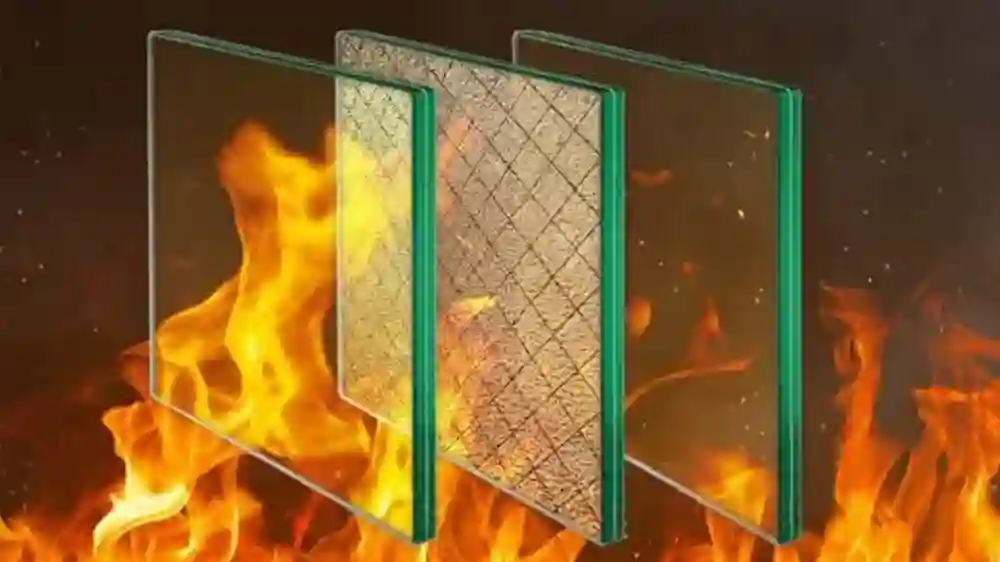When it comes to building materials, fire safety is a critical consideration. Among the materials used in construction and design, glass plays a significant role in enhancing safety. However, terms like “fire-resistant glass” and “fireproof glass” are often used interchangeably, leading to confusion. Understanding the differences between these two types of glass is essential for architects, builders, and homeowners alike. In this article, we will delve into the definitions, properties, applications, and key differences between fire-resistant glass and fireproof glass.

What is Fire-Resistant Glass?
Fire-resistant glass is designed to withstand high temperatures for a specified duration. It is constructed using various materials, such as tempered glass, laminated glass, or special composites, which allow it to resist the passage of flames and smoke. Fire resistant glass is rated according to the amount of time it can withstand fire, typically ranging from 20 minutes to 3 hours, depending on the specific application and building codes.
Key Features of Fire-Resistant Glass
- Temperature Resistance: Fire-resistant glass can endure extreme temperatures, which helps prevent the spread of fire.
- Limited Integrity: While it can withstand heat, it may not remain intact under certain conditions, especially if subjected to intense heat or rapid temperature changes.
- Certification and Ratings: Fire-resistant glass is tested and rated according to industry standards, ensuring it meets specific fire safety regulations.
What is Fireproof Glass?
Fireproof glass, on the other hand, is designed to provide a higher level of protection than fire-resistant glass. It can withstand fire and heat for extended periods without breaking or allowing flames and smoke to pass through. Fireproof glass is typically made from materials like ceramic, mineral-based composites, or specially engineered glass, which allow it to maintain its structural integrity even under extreme conditions.
Key Features of Fireproof Glass
- Superior Protection: Fireproof glass is designed to offer maximum protection against fire, preventing the passage of flames and smoke for extended periods.
- High Structural Integrity: Unlike fire-resistant glass, fireproof glass is more likely to maintain its integrity, even in high-temperature situations.
- Longer Ratings: Fireproof glass often comes with longer fire ratings, typically from 1 to 3 hours, making it suitable for critical fire safety applications.
Applications of Fire-Resistant and Fireproof Glass
Fire-Resistant Glass Applications
- Internal Partitions: Fire-resistant glass is often used in non-load-bearing partitions in commercial buildings, where it helps compartmentalize spaces without blocking visibility or natural light.
- Doors and Windows: It can be used in fire-rated doors and windows, providing an additional layer of protection without compromising aesthetics.
- Skylights: Fire-resistant glass can be installed in skylights to allow natural light while adhering to fire safety regulations.
Fireproof Glass Applications
- Fire-Rated Walls: Fireproof glass is commonly used in fire-rated walls in commercial and industrial buildings, where it acts as a barrier to prevent the spread of fire and smoke.
- Elevator Shafts: Due to its superior integrity, fireproof glass is often installed in elevator shafts, protecting against fire and smoke infiltration.
- Critical Safety Areas: Fireproof glass is utilized in areas where maximum protection is necessary, such as hospitals, schools, and high-rise buildings.
Key Differences Between Fire-Resistant Glass and Fireproof Glass
1. Performance Levels
The most significant difference between fire-resistant and fireproof glass is their performance levels. Fire-resistant glass can withstand fire for a limited time, while fireproof glass is designed to endure high temperatures for longer durations without losing integrity.
2. Material Composition
Fire-resistant glass is often made from tempered or laminated glass, which can resist heat but may shatter under extreme conditions. In contrast, fireproof glass is constructed from more robust materials, such as ceramics or special composites, that can maintain structural integrity even in severe heat.
3. Application Scope
Fire-resistant glass is typically used in applications where some level of fire protection is required but where the risk of extreme fire conditions is lower. Fireproof glass is used in situations where fire safety is critical and where the risk of a severe fire is higher.
4. Cost
Due to the advanced materials and engineering involved, fireproof glass is generally more expensive than fire-resistant glass. This cost difference is an important consideration when selecting materials for construction or renovation.
Conclusion
Understanding the differences between fire-resistant glass and fireproof glass is essential for making informed decisions about fire safety in buildings. While both types of glass serve vital roles in enhancing safety, they are designed for different applications and performance levels. Fire-resistant glass offers adequate protection for less critical areas, while fireproof glass is essential for applications requiring maximum safety. When planning your construction or renovation project, it is crucial to assess your specific fire safety needs and select the appropriate type of glass to ensure the safety and integrity of your space. By doing so, you can create a safer environment for yourself, your family, and anyone who may occupy the building in the future.